
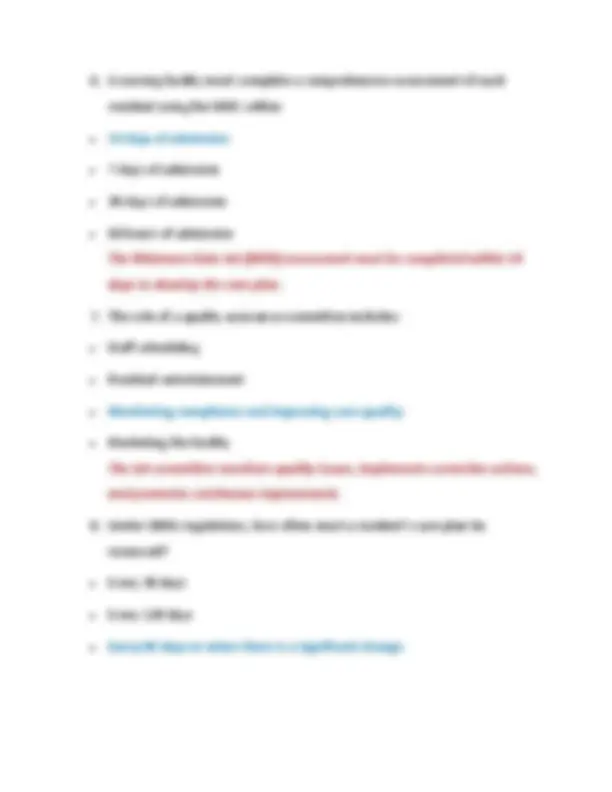
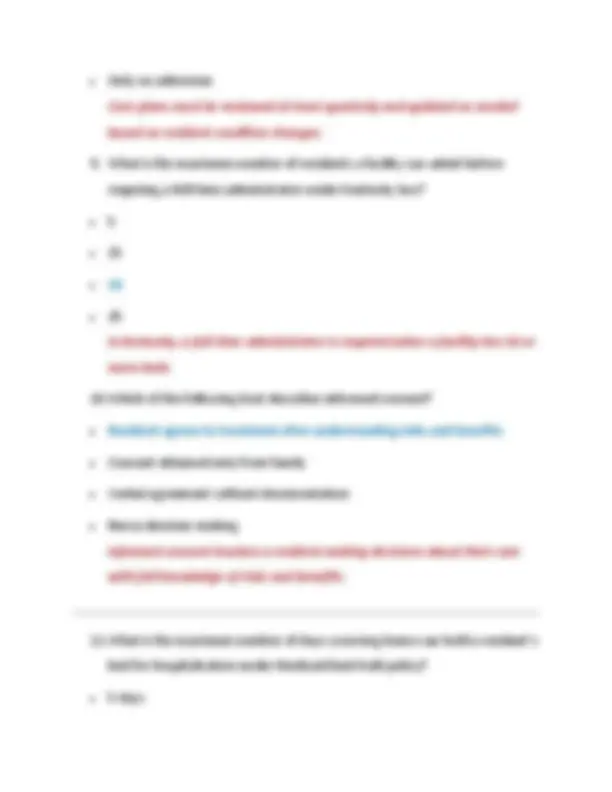
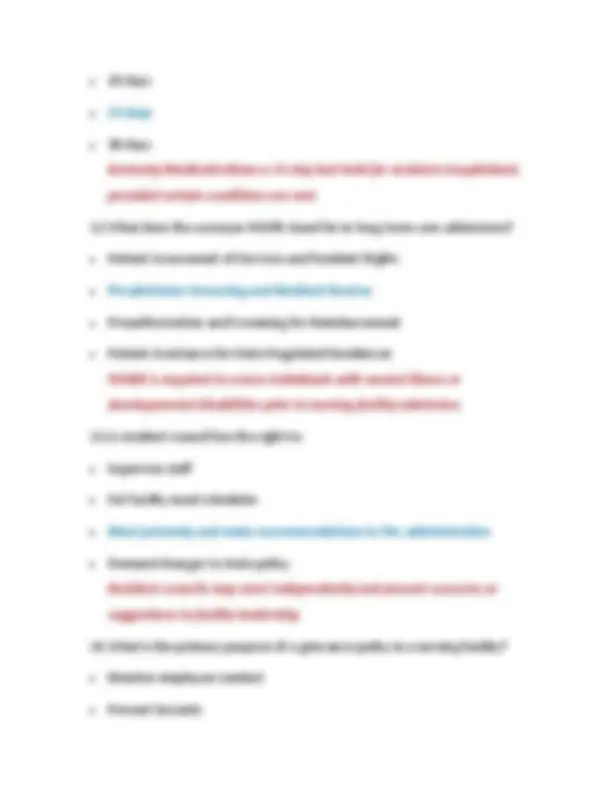
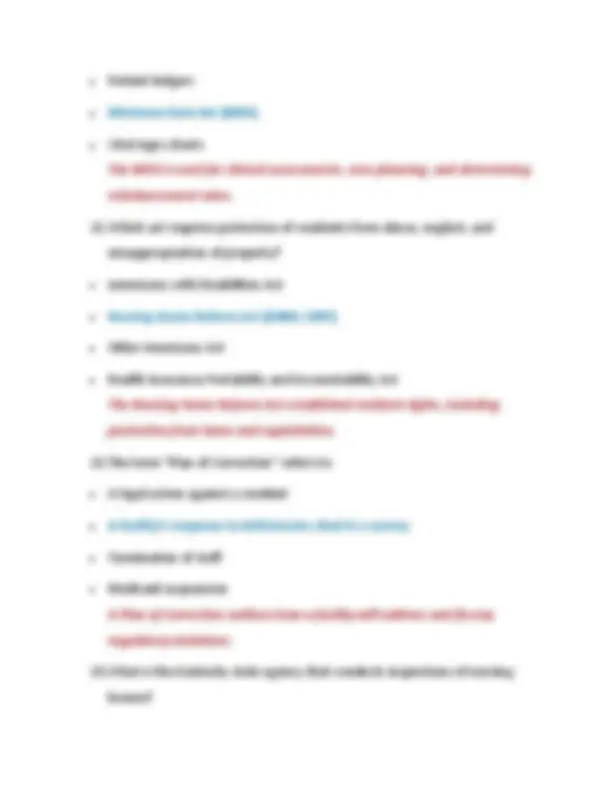
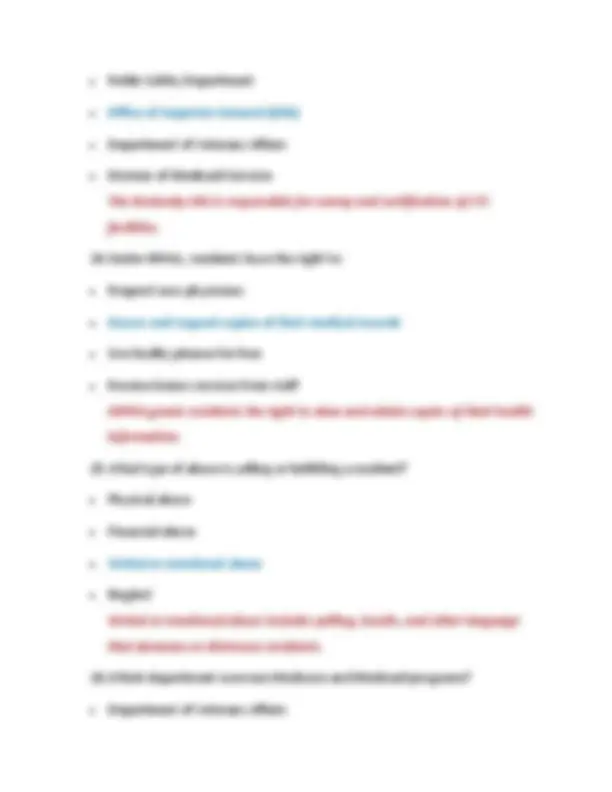
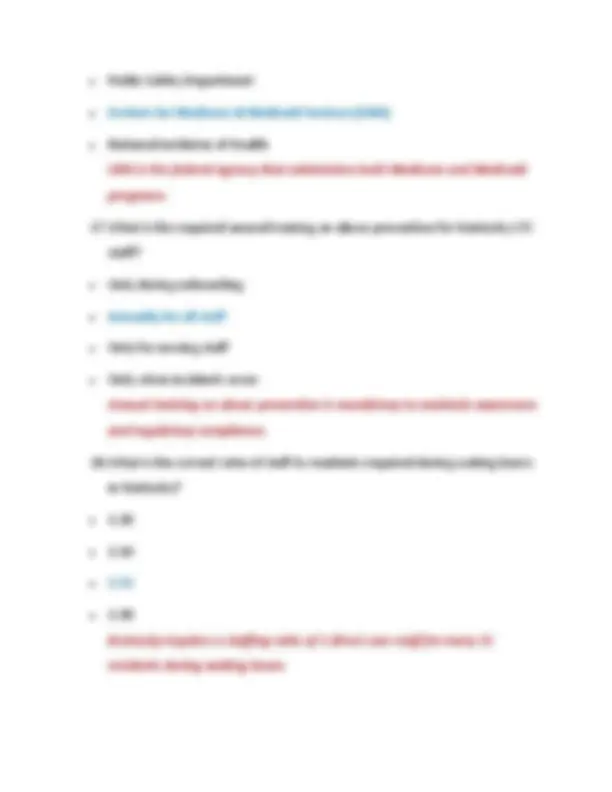
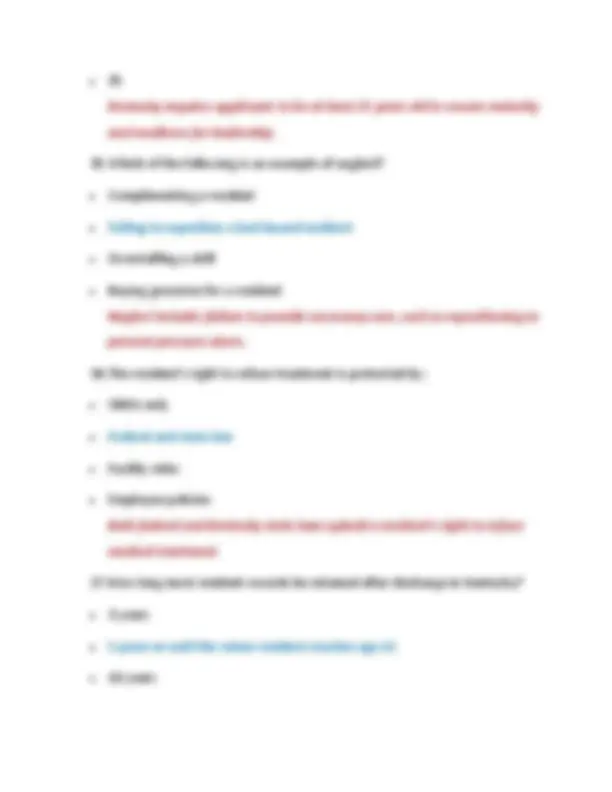
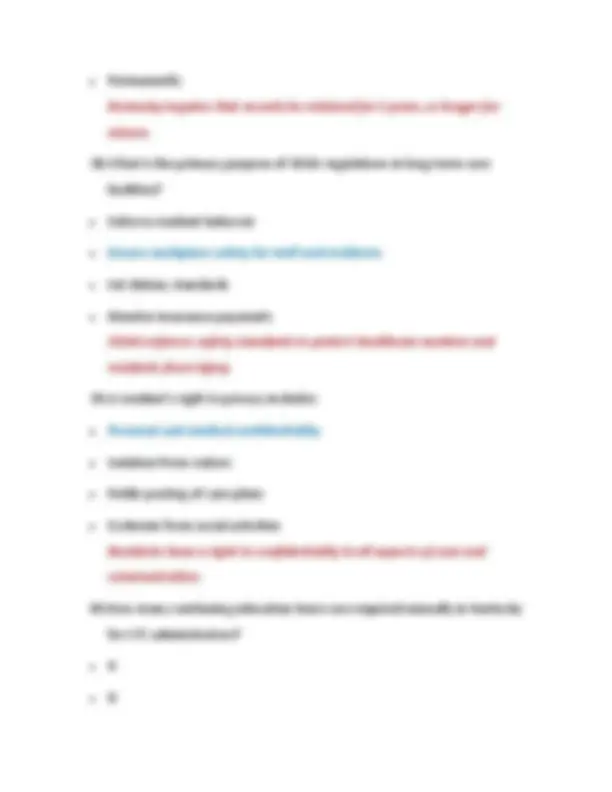
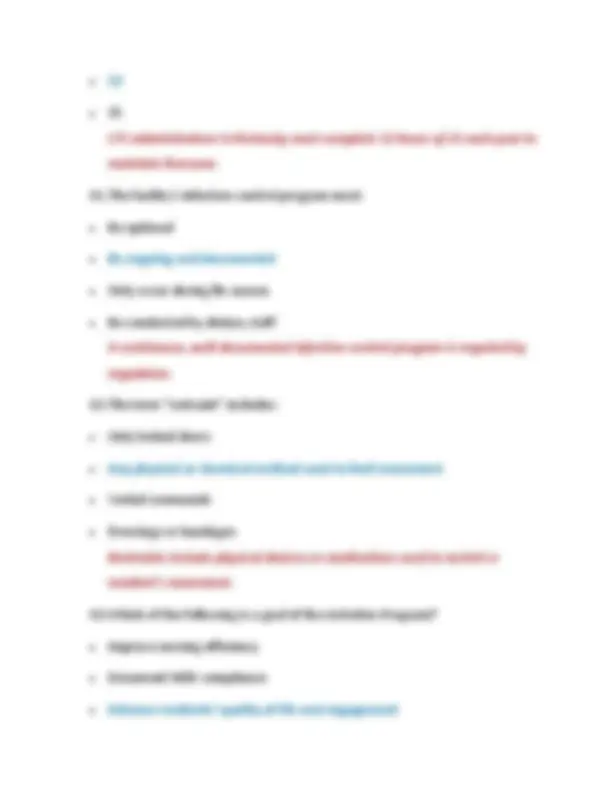
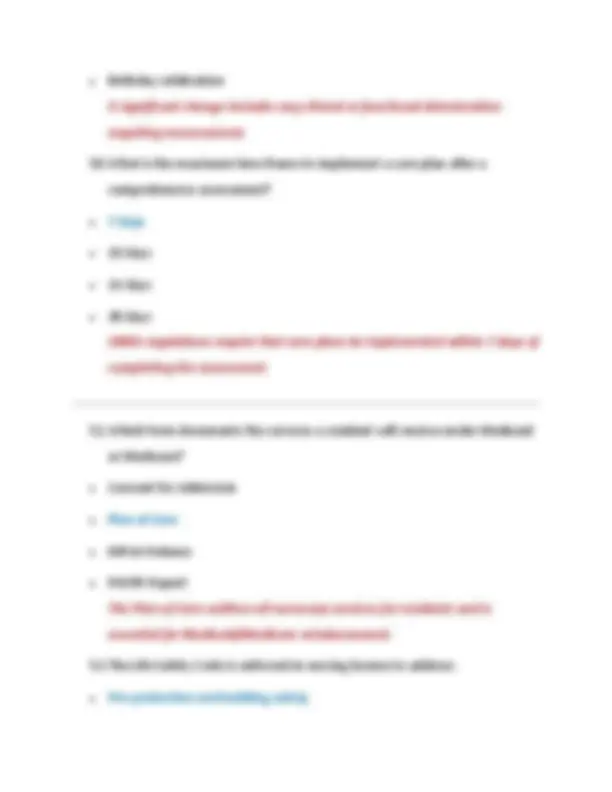
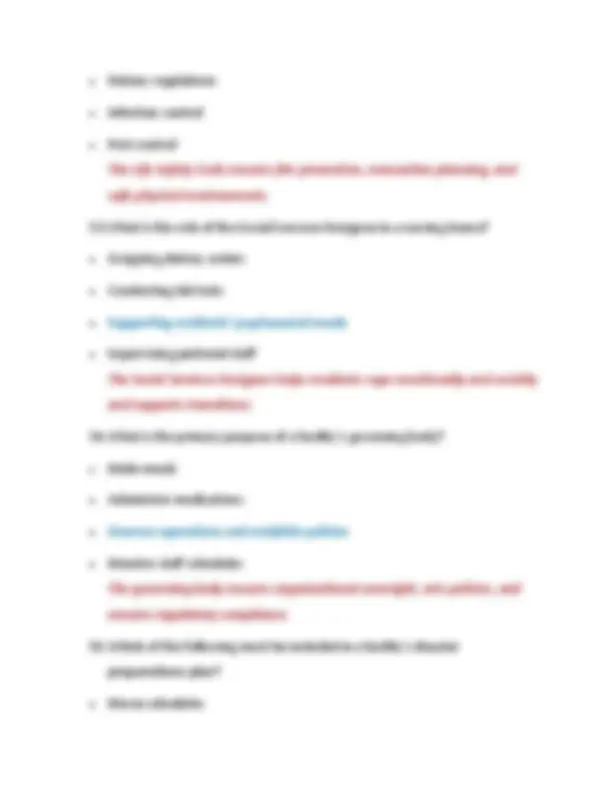
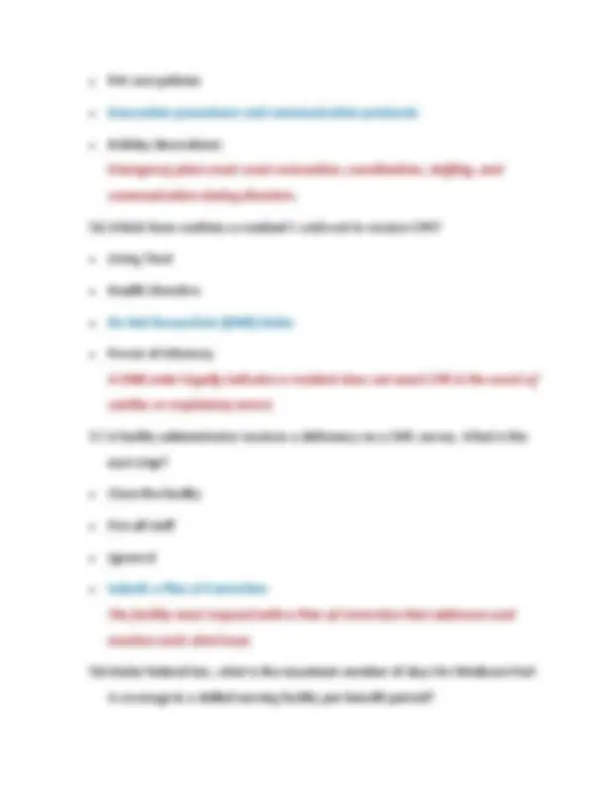
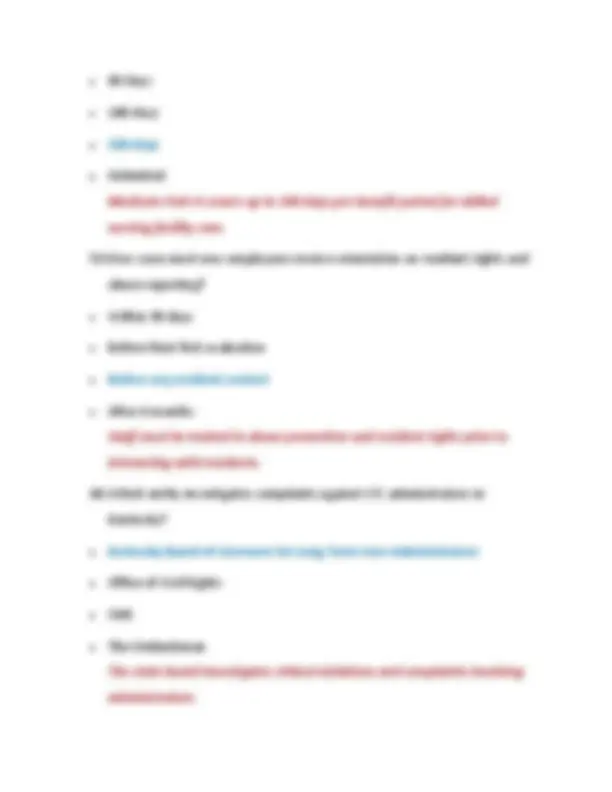
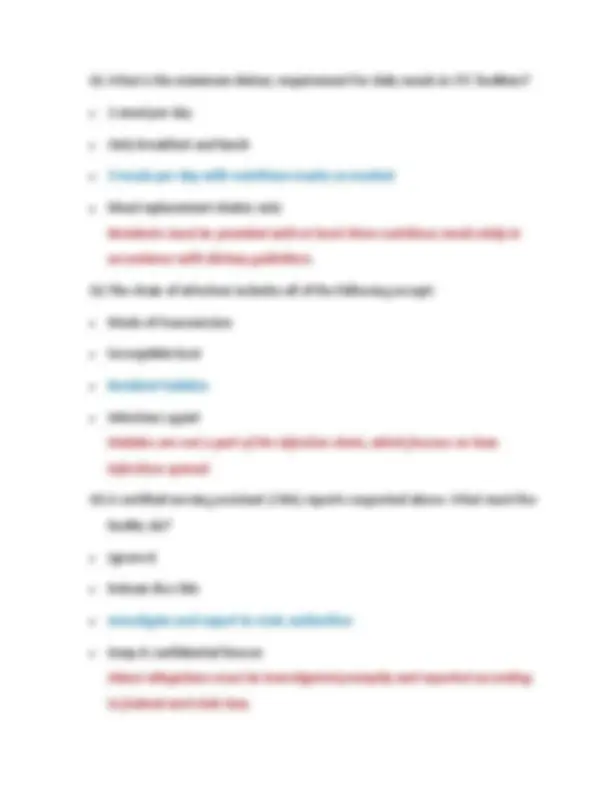
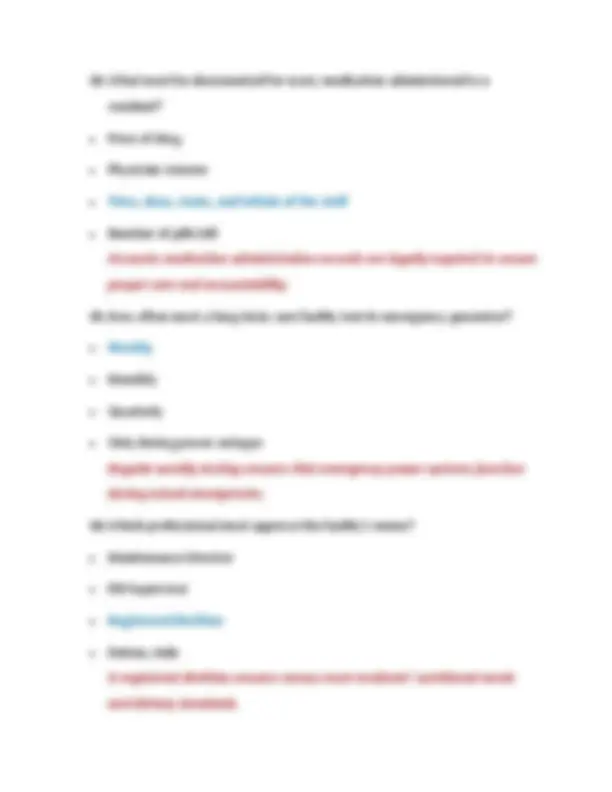
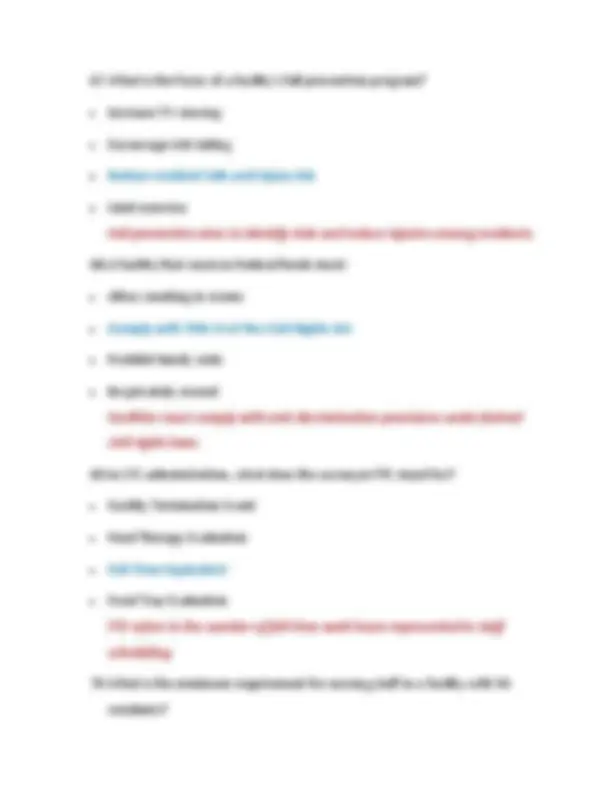
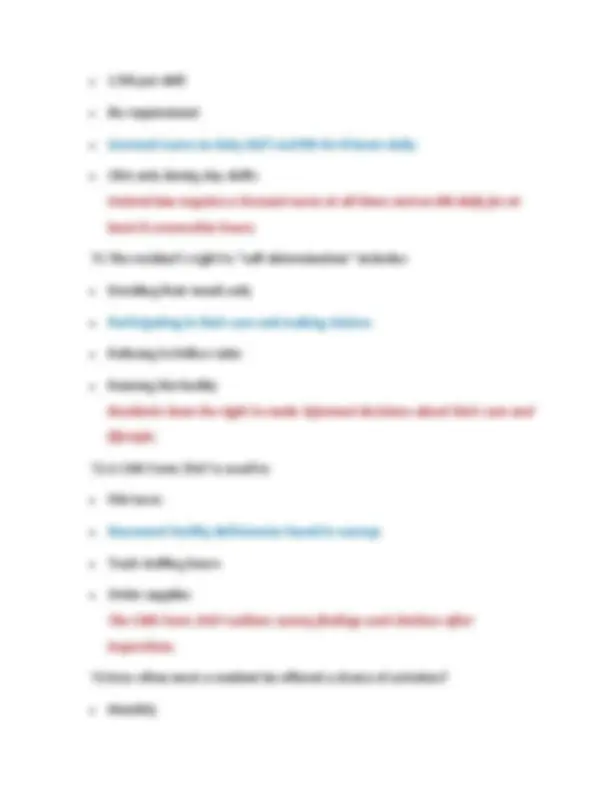
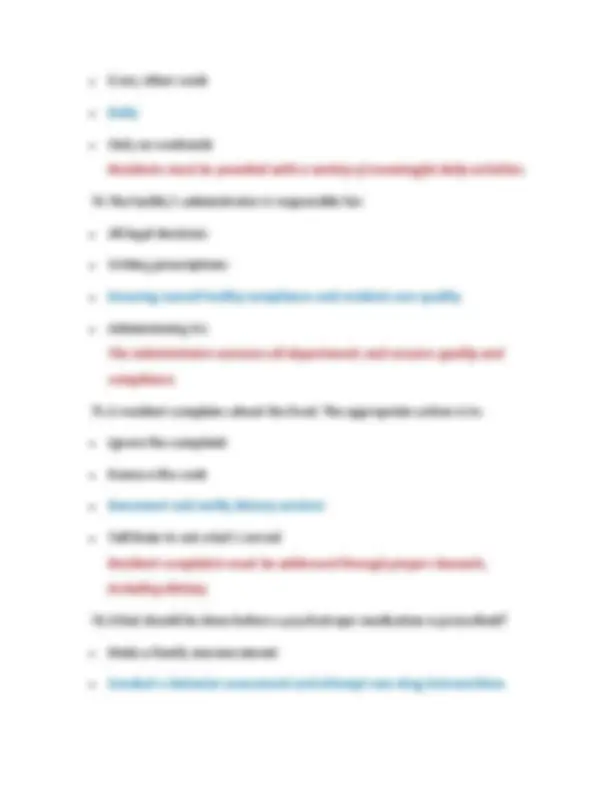
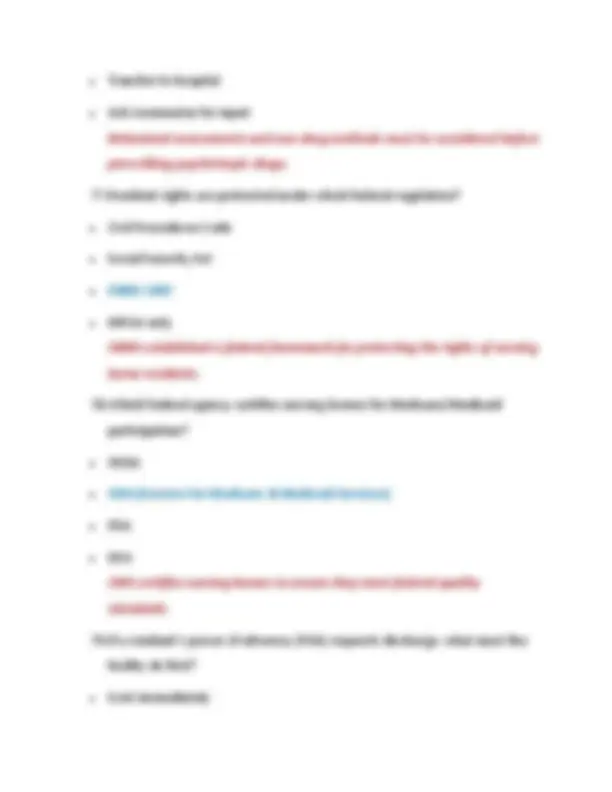
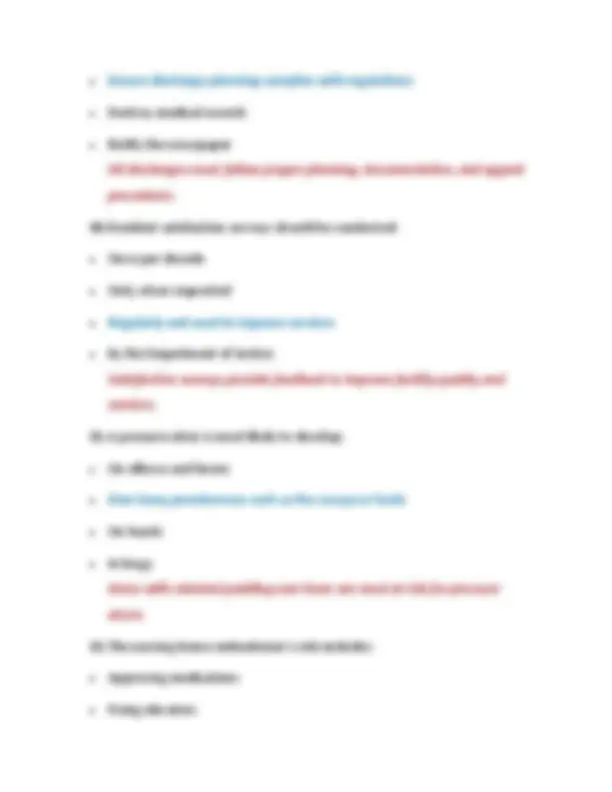
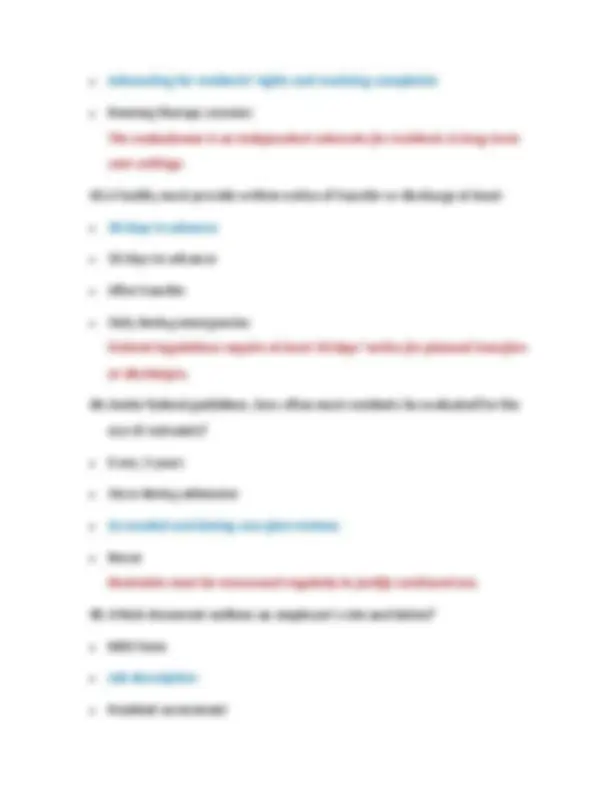
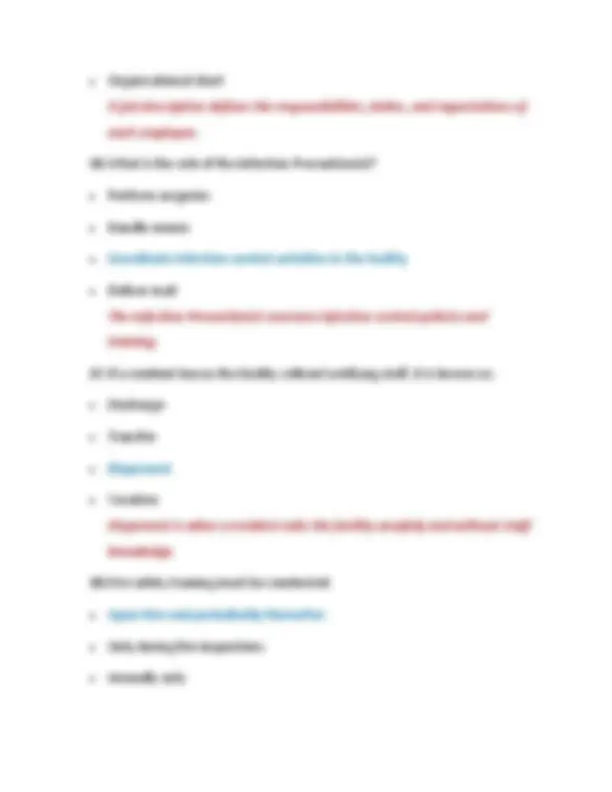
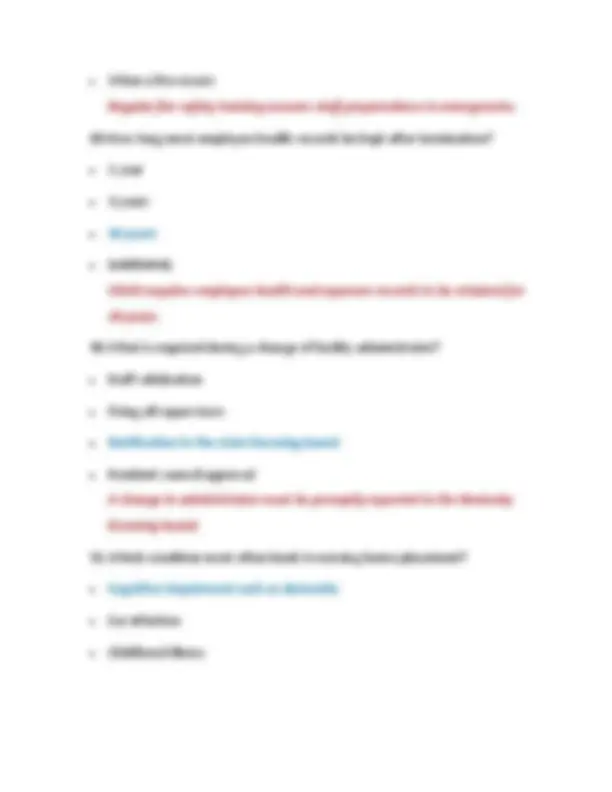
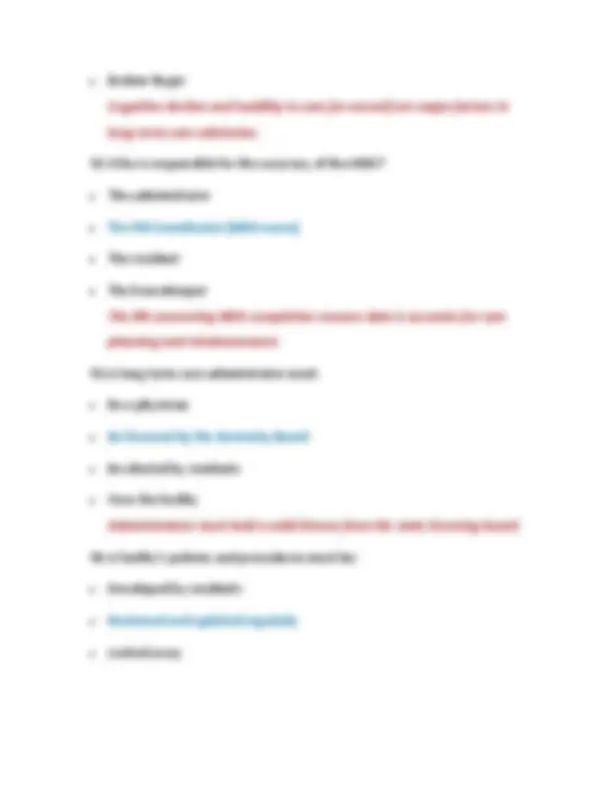
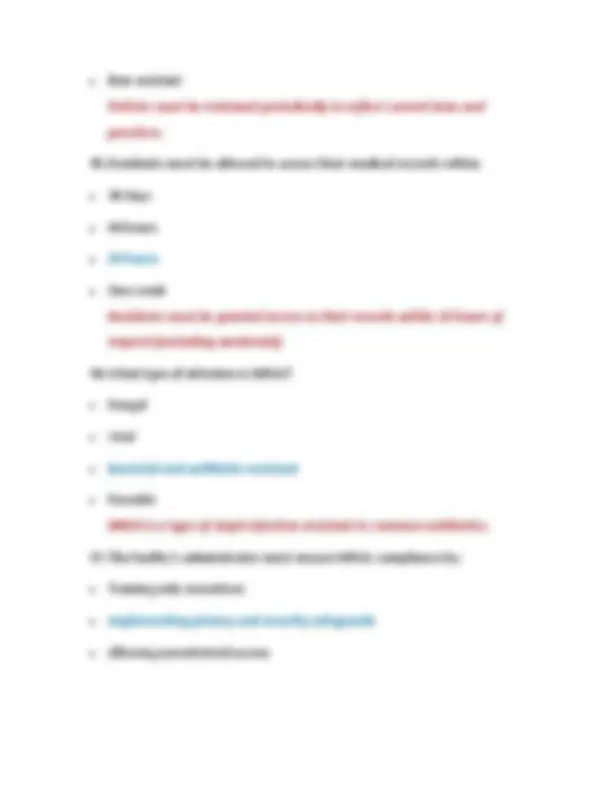
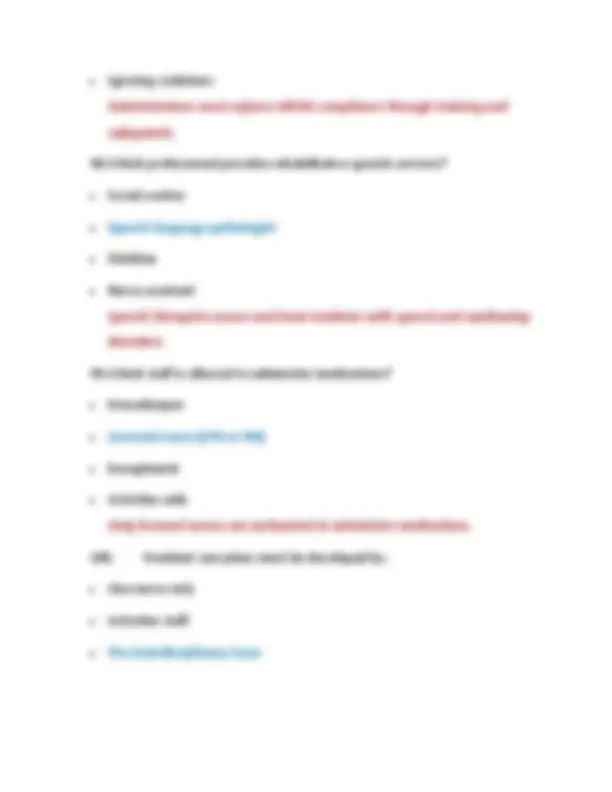



Study with the several resources on Docsity

Earn points by helping other students or get them with a premium plan


Prepare for your exams
Study with the several resources on Docsity

Earn points to download
Earn points by helping other students or get them with a premium plan
Community
Ask the community for help and clear up your study doubts
Discover the best universities in your country according to Docsity users
Free resources
Download our free guides on studying techniques, anxiety management strategies, and thesis advice from Docsity tutors
Kentucky Board of Licensure for Long-Term Care Administrators Questions And Correct Answers (Verified Answers) Plus Rationales 2025 Q&A | Instant Download
Typology: Exams
1 / 35

This page cannot be seen from the preview
Don't miss anything!




























29.Which agency investigates elder abuse allegations in long-term care settings?
Kentucky requires applicants to be at least 21 years old to ensure maturity and readiness for leadership. 35.Which of the following is an example of neglect?